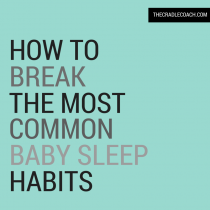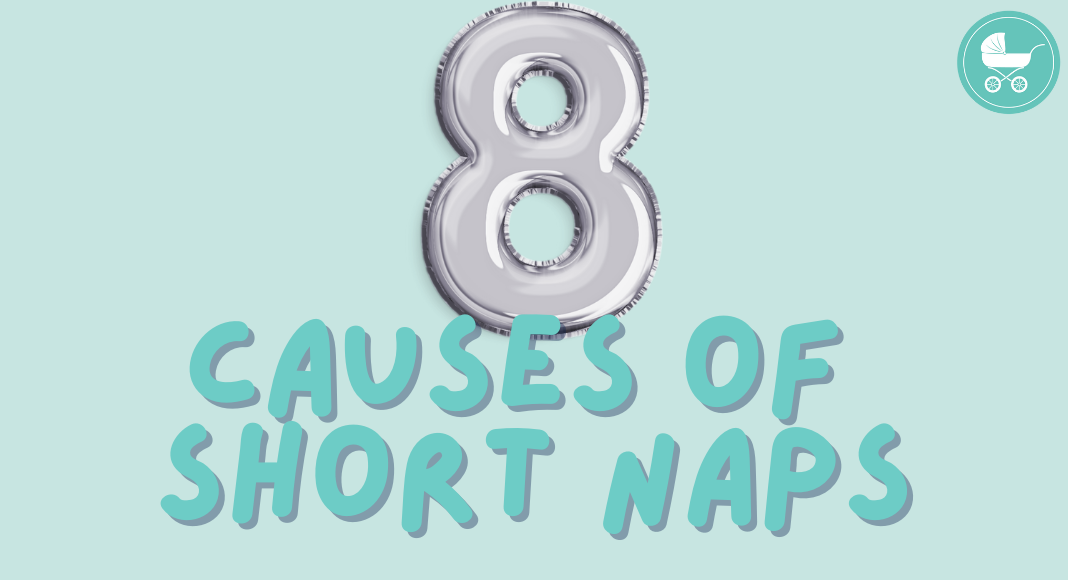
April 22, 2015
When you have a new baby, most of the time you are on what I like to call “survival mode”. Survival mode simply describes the period of time you are so exhausted, you will do whatever it takes to get your little one to sleep. However long they want to sleep for, you allow. Wherever […]
Breaking Common Sleep Habits
When you have a new baby, most of the time you are on what I like to call “survival mode”. Survival mode simply describes the period of time you are so exhausted, you will do whatever it takes to get your little one to sleep. However long they want to sleep for, you allow. Wherever they want to fall asleep, you let them. And however way they fall asleep, becomes the new norm. This is where a lot of habits are made – the same habits that later on need to be changed.
Trust me, when I brought home baby number 3, I was on survival mode. My son was sleeping in a swing for a good two weeks straight for every nap I could give him at home! And not only was he rocking away but every time he came close to waking up after a short cat nap, that pacifier was placed right back in his mouth to give me 10 more minutes of rest. Exhaustion takes over. A few long nights turn into weeks and now the only thing that is getting you through the day is that extra shot of expresso you now take in your coffee. The good news is you can absolutely break some of these hard habits. Most habits really come into place around the 3-4 month mark. They now realize when the breast is gone, the swing isn’t turned on, the pacifier is out, or the rocking has ceased. We compiled a common list of habits that most of us parents create but more importantly, solutions for you to break!
Having to rock your baby to sleep:
If you are constantly having to rock your baby to sleep and your child constantly wakes in the night, plan on breaking this habit fast. The good news with rocking to sleep is that you don’t have to eliminate it all together. You can still rock your baby during their bedtime routine but only until they begin to get drowsy. Once they start showing this sign, immediately place your baby in their crib. More then likely, your child will immediately cry because of the desire to be in motion while in your arms. Comfort your child for a few minutes and step away. If your child cries, give them a few minutes to fuss without assistance (two or three is plenty) and then go back in for a moment to comfort, reassure and readjust your child. Do your best to not pick your child up out of the crib, seeing that this is the habit you want to break. Continue on with this plan throughout the night until your child has fallen asleep on their own. Remember, your ultimate goal is to not take your child out of the crib so consistency is key!
Constantly replacing the pacifier:
If your child has turned the pacifier into a game – constantly dropping the pacifier out of their mouths or better yet, chucking them out of their cribs for you to come quickly and replace it – then it’s time to play a new game. You don’t have to give up the pacifier all together. Simply start off their bedtime routine with the pacifier. If they take it out of their mouths or throw it out of the crib, you can decide if you want to give it back to them at all or lose it for a set amount of time. If you choose the second option, go in and shhhh them or lay them back down in their crib, but do not give them the pacifier. Give them a set amount of time (3-5 minutes is plenty) to be without the pacifier and to fuss a little. Once the time has hit, go back in their room and place the pacifier in their hands and if they are too young, guide it in their mouth. Do this EVERY OTHER TIME they spit it out or throw it. They will begin to see that they will want to keep that pacifier. I always say if they are old enough to throw it out of their cribs, go ahead and remove it for the rest of the night. They definitely know better. If you decide your only option at this point is to remove the pacifier all together, HERE is a great post on how to take the pacifier away.
Bottle feeding or nursing to fall asleep
This is a pretty common habit that a large majority of us moms make. It is so easy to whip out your breast or make a quick bottle when your baby is fussing. But this can quickly become a habit that is one of the hardest to change. It takes time and strategic planning. First of all, make sure you try to break this habit after you have completed a good feeding during your bedtime routine or if you know you need to drop a feeding during the night if your child is only waking for comfort. If they are hungry feed them. But if they are falling asleep on you during your bedtime routine or waking up every hour looking to be nursed back to sleep, it’s time to make a change. Tickle your child’s toes or give them a good burp after the feeding or when they begin to fall asleep. Making sure they are drowsy but awake is key to fixing this issue. You don’t want to make sure the last thing they see is their crib, not the bottle or breast. If you have a feeding you are trying to eliminate, begin weaning them! HERE is a great plan on doing so. But no matter what you do, take your time doing it! Especially since they are use to having this all day every day and not just for bedtime.
Swinging to sleep:
The swing. A very common baby item that is found in most newborn homes. It’s easy, it’s there, and it gives you a moment to rest. But what can be an easy item to have your baby fall asleep in, is also a hard item to break…especially for naps… which seems to be a common occurrence. To transition from the swing to the crib, start by bringing the swing in your child’s room. Reducing the motion is your first goal. This can take a good week to break so plan accordingly. If you have it on a level 3 motion now, every two days drop it down a notch until it’s completely still. After a few days of being still, move your child into the crib. Have your crib slightly elevated and place your child in a sleep sack or with some wrapped up breathable blankets on either side of them. We love the Zipadee-Zip sleep sacks. It gives them a tight feel that they are use to from the swing but in a new opened space. Have your sleep training technique ready as you might have to help teach them how to fall asleep in this new environment. Once you have eliminated the swing, get rid of it! HERE is a blog post of a client’s experience as we began transitioning them from the swing to their crib.
Remember, if you find that your child will respond to ripping the bandaid and transition immediately without making slow changes, by all means go for it! Some children you have to go cold turkey. No matter how you decide to handle these common sleep habits, just remember to plan for a week or two of sticking to your plan. Being consistent during times of transition is important! You child needs to know what is expected of them and are looking to you for that support. Remember: You got this!!!
Get instant access to our free sleep class for children from newborn to 5 years old. You will learn how to get your child to sleep independently -- and all through the night!
Get Your Child To Sleep All Night Long in as Little as 7 Days!
join the free class
THE CLASS



